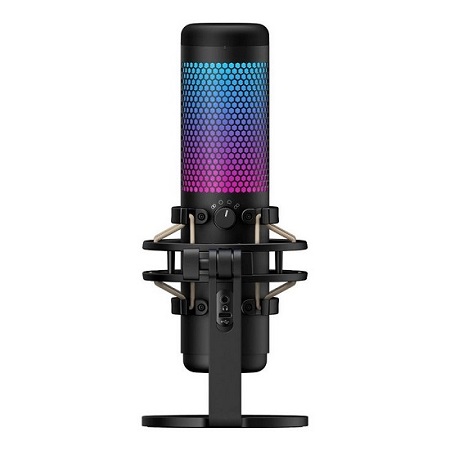In today’s gaming world, communication is just as important as gameplay. Whether you’re strategizing with your team in a royale, streaming to an audience, or recording your gameplay highlights, a gaming microphone is a vital piece of equipment. It allows you to deliver crystal-clear sound, ensuring your voice is heard loud and clear.
If you’re still using the basic mic on your headset, it’s time to level up. Here’s why a gaming microphone should be part of your setup and how to choose the best one for your needs.
1. The Role of a Gaming Microphone
A gaming microphone is designed to capture your voice with precision, reducing background noise and delivering high-quality audio. Whether you’re competing, creating content, or simply chatting with friends, it ensures you communicate effectively and professionally.
2. Benefits of a High-Quality Gaming Microphone
a) Clear Communication
In multiplayer games, clear communication is key to victory. A good gaming microphone ensures your commands, strategies, and reactions are easily understood by your teammates.
b) Professional-Grade Audio for Streaming
If you’re a streamer, a clear and crisp microphone can make or break your content. Audiences appreciate clear commentary and seamless sound quality.
c) Noise Reduction
Many gaming microphones come with built-in noise cancellation, filtering out unwanted background noise like keyboard clicks or fan hums, keeping the focus on your voice.
d) Versatility
Beyond gaming, these microphones can be used for podcasts, video calls, or content creation, making them a multi-purpose addition to your setup.
3. Types of Gaming Microphones
There are various gaming microphone options, depending on your needs and setup:
a) USB Microphones
- Ideal for plug-and-play use.
- Great for gamers, streamers, and beginners.
- Example: Blue Yeti, HyperX QuadCast.
b) XLR Microphones
- Offers superior audio quality for professionals.
- Requires an audio interface or mixer.
- Example: Shure SM7B, Audio-Technica AT2020.
c) Headset Microphones
- Built directly into gaming headsets for convenience.
- Ideal for casual gamers but lacks studio-grade quality.
d) Standalone Microphones
- Often mounted on a desk or boom arm.
- Provides flexibility and high-quality sound.
4. Key Features to Look For in a Gaming Microphone
a) Audio Quality
Look for a microphone with a wide frequency range and high sensitivity for clear, natural sound.
b) Noise Cancellation
A cardioid or unidirectional microphone captures sound from one direction, reducing background noise effectively.
c) Adjustability and Controls
Microphones with built-in gain controls, mute buttons, and pop filters give you better control over audio quality.
d) Build Quality
Durable materials and a stable stand or boom arm are essential for long-term use.
e) RGB Lighting
For aesthetic appeal, many gaming microphones now come with customizable RGB lighting.
5. Popular Gaming Microphones
Here are some top-rated options in the gaming community:
- HyperX QuadCast S: Known for its stunning design and clear sound.
- Blue Yeti X: A versatile USB mic perfect for gaming and streaming.
- Razer Seiren Elite: Designed for gaming experiences.
- Shure MV7: A hybrid USB/XLR mic for high-quality audio performance.
6. Setting Up Your Gaming Microphone
To get the most out of your microphone, follow these steps:
- Position It Correctly: Place it at mouth level, about 6–12 inches away.
- Use a Pop Filter: This minimizes popping sounds from plosive words like “p” and “b.”
- Adjust Settings: Fine-tune gain, volume, and noise suppression for optimal results.
- Test Regularly: Check audio levels before starting any game or stream.

